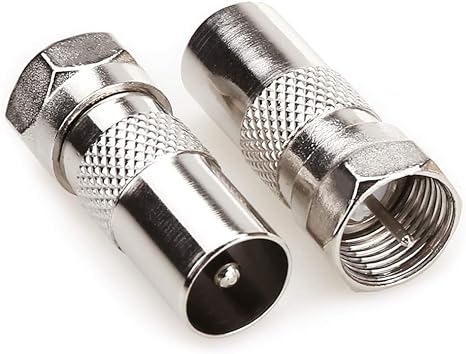Robbo3":yh3ahehc said:
Eric The Viking":yh3ahehc said:
Satellite, UHF TV ("Freeview"), VHF ("FM radio"), DAB ("digital radio") can all go down the same cable, with a bit of planning. Right now ours only does UHF & VHF, but has the capability to do all four.
What happens at the bottom of the single cable? When you split it don't you get signal loss or is the loss acceptable as a trade off for convenience?
No losses because of the multiplexing (signals sharing one cable) - each has its own frequency band and they don't really interact. You will get signal loss from distance (especially with the higher frequency ones such as satellite), and incorrect termination...
... What does cause issues (potentially lots) is splitting the cable to multiple outlets. If this isn't done properly, you get reflections from the open ("unterminated") ends of the unused cables, which interfere with the wanted signal. In the days of analogue TV, this would typically show up as "ghosting" - a second ghostly image shifted slightly to left or right of the picture. In digital systems it doesn't cause as much of a problem, unless it's severe, in which case the thing just won't work, even though it checks out with a multimeter.
The cure for this is almost always correct termination (75 Ohms in the case of CoAx), and using distribution amplifiers (DAs), and/or proper signal splitters. What you cannot do is just splice cables together when you want multiple outlets. Splitters, and even decent DAs aren't expensive though, because they are used a lot and the components inside them are cheap - splitters are just three resistors in a box with sockets on (obviously they need to be the
right value resistors! though).
You used to be able to get pretty decent splitters and DAs from Toolstation - it's where mine came from. Labgear is a pretty reasonable brand.
The only slightly annoying issue nowadays is that the connectors on them are "F" connectors (ubiquitous in the USA), but the back of British TVs and usually the wallplates too are "Belling Lee". F conns are easy to use and fit to cable, Belling Lee less so (if you want them reliable!), but both are cheap - you probably can't get away with just one type. The image below is actually of a pair of converters, but of the bits you can see into, Belling Lee is on the left, "F" on the right.
In use, the solid copper core of the co-ax forms the pin you see on the right, but that has to be soldered into the fatter pin of a Belling Lee plug (if you are doing it properly!). Wall plates usually have screw terminals for cheapness - not nice and need a bit of care when you connect cables to them. Earthing is important and has to be done with care.
Yes it's an easy DIY job, but a bit of understanding is necessary for more complex setups (e.g. lots of outlets or lots of aerials being combined).

































